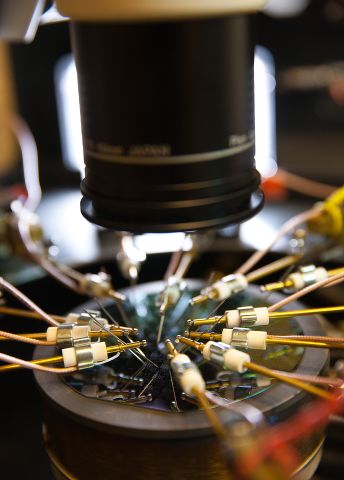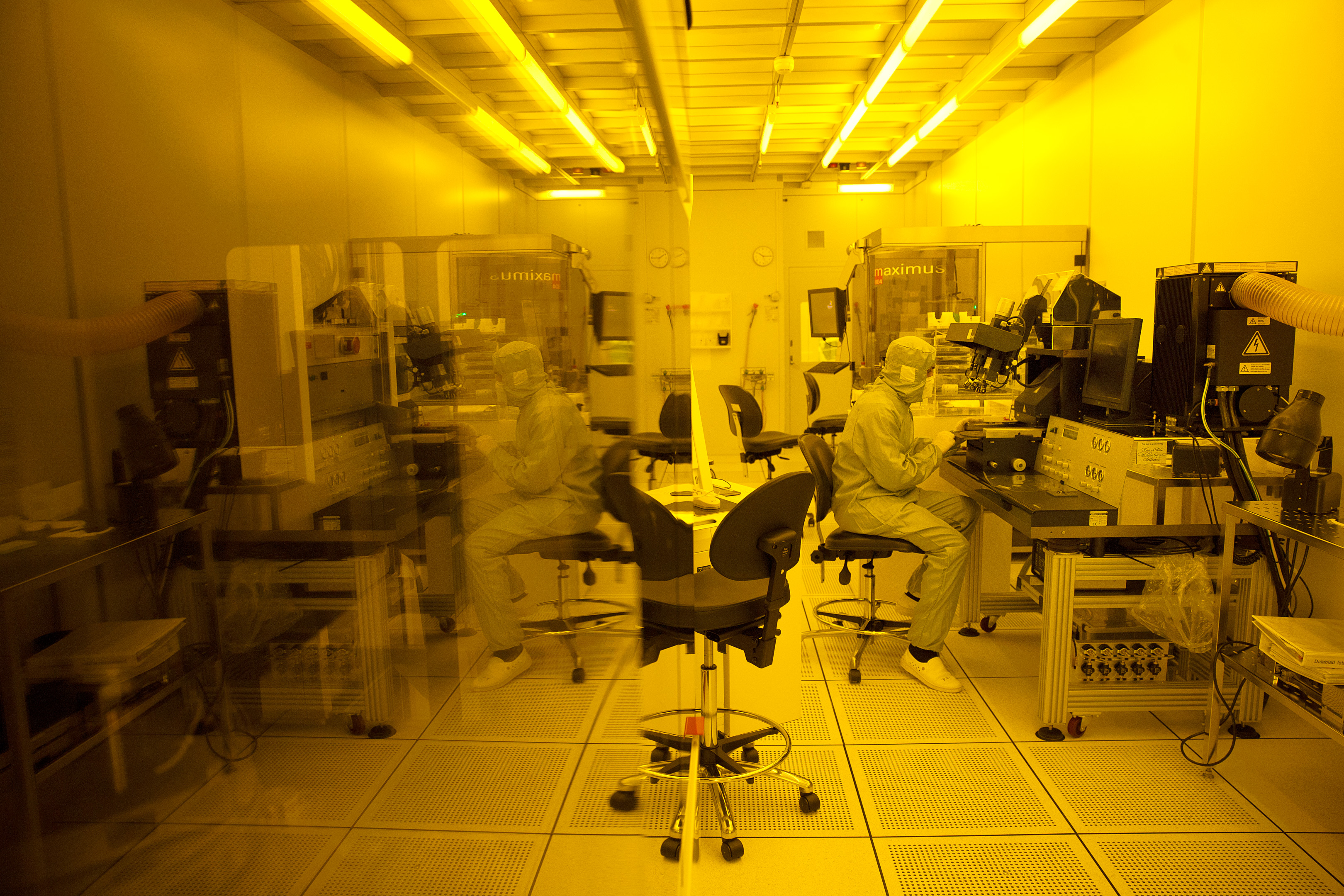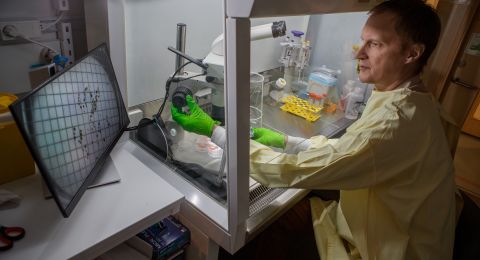
Project Grant 2013
WOV - Working on Venus
Principal investigator:
Mikael Östling
Co-investigators:
Christer Fuglesang
Ana Rusu
Carl-Mikael Zetterling
Frank Niklaus
Gunnar Malm
Hans-Peter Nee
Linköping University
Anita Lloyd Spetz
Institution:
KTH Royal Institute of Technology
Grant in SEK:
SEK 22.9 million over five years
The Cold War space race between the US and the Soviet Union led to huge breakthroughs - the development of satellites, mapping of alien solar systems and galaxies and, not least, the manned moon landing. Many have speculated that the 21st century will be even more of a "century of space" when mankind sets out into space in earnest with manned expeditions to Mars and regular space tourism.
The longing to space drives new technology that is of benefit in various parts of society. This is also the idea behind the research project “WOV - Working on Venus” that is being financed by the Knut and Alice Wallenberg Foundation. With the planet Venus in sight, researchers at KTH Royal Institute of Technology and Linköping University will develop new high-temperature electronics for five years that can withstand the extreme climate that prevails there.
Venus teaches us more about the Earth
The last time pictures were attempted to be taken from the planet’s surface was in the 1970s, explains project manager Mikael Östling, Professor of Solid State Electronics at KTH.
“The Soviet Union sent off their Venera probes with encapsulated cameras that were cooled. It can get hotter than 460 degrees Celsius on Venus. But in just a few hours, the electronics had broken down and there was only time for a few color photos, the only ones in existence.”
Many recognize the bright dot in the sky. Historically, the planet Venus was believed to be a star, hence the name the “Morning Star” and the “Evening Star”.
Learning more about Venus could provide greater understanding of the Earth’s climate and origins. Both of the planets probably arose from the same material and there may be, or may have been, life on Venus despite the inhospitable conditions. The nearly 500-degree heat is due to a strong greenhouse effect, caused by an atmosphere that is dominated by carbon dioxide (95 percent) and by a high pressure at the surface that is 90 times larger than on Earth.

New electronics being developed in Kista
At KTH in Kista, silicon-carbide electronics have been developed for more than 20 years, a material that functions at high temperatures and radiation. A large part of the development work is done in the Electrum lab, which was previously built up with grants from the Knut and Alice Wallenberg Foundation. Now, the research has come so far that it is possible to produce integrated circuits with more complex functions from the new silicon-carbide.
“After many years of research, we now know that it is possible based on our expertise to build a complex electronics system that could land on Venus and send data for a prolonged period of time. We’ve demonstrated that some silicon-carbide circuits can handle at least 500-degree heat,” says Östling.
Prototype being developed
The idea is to build a prototype over five years that contains all of the electronics necessary to be able to conduct a study of the surface of Venus for an extended period of time. For this, sensors are needed that can measure earthquakes, radiation and temperature, electronics to amplify and digitize signals and control circuits to control the collection of measurement data. In addition, a digital camera is also planned to be made that does not immediately wither away from the heat, and a durable power source.
Östling has put together a “dream team”, as he calls it, with various specialists from KTH and Linköping University and with the astronaut Christer Fuglesang as an adjunct professor.

“Fuglesang is not just a poster name, but contributes with the strength of his knowledge of the Swedish aerospace industry and his broad network of contacts internationally, including with the ESA.”
Applications on Earth
The physical electronic components developed in the project will probably never be sent to Venus, but the concept can form the foundation for future Venus expeditions and become an injection in the Swedish aerospace industry. But it is not only space that is of interest. The new electronics entail a number of new applications on Earth as well.
“The big visions of space have often generated positive side effects. We reason in the same way here. Silicon-carbide electronics move the boundaries for where electronics can be used. This is a major leap where we envision use in various ’tough’ environments where electronics are not currently present.”
This involves, for example, safety systems for the monitoring of nuclear power plants and several geological applications like the exploration of volcanoes and greater depths below the Earth’s surface as well as in geothermal energy and oil and gas drilling. Silicon carbide is already used today in Tokyo’s metro system and in LED screens and the future potential is huge.
“There is considerable satisfaction in seeing the technology reach out in society. As a researcher, you always learn that the market comes far later than one would think. People have to be convinced that the new technology is good and that there has to be a need. Sweden has stayed on the forefront of silicon carbide component research for many years, and thanks to this project and the Wallenberg Foundation’s support, we can maintain a leading position,” concludes Mikael Östling.
Text Nils Johan Tjärnlund
Translation Semantix
Photo Magnus Bergström



